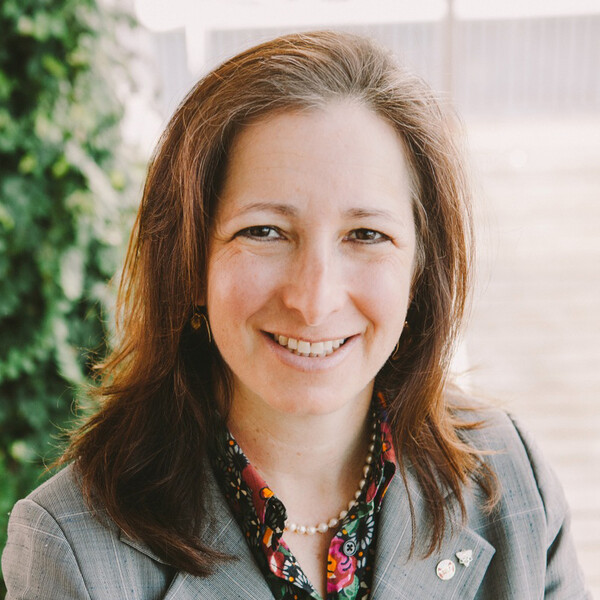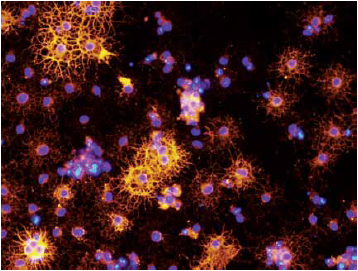Main Second Level Navigation
Molly Shoichet
O.C., PhD, FRSC

Qualification
- Scientist, CytoTherapeutics, Providence, RI, U.S., 1992-1995.
- University of Massachusetts, Amherst, MA, U.S., PhD in Polymer Science and Engineering, 1992.
- University of Massachusetts, Amherst, MA, U.S., MSc in Polymer Science and Engineering, 1989.
- Massachusetts Institute of Technology, Cambridge, MA, U.S., SB in Chemistry, 1987.
MY RESEARCH OVERVIEW (GO TO SCIENTIFIC OVERVIEW)
Opportunities to Reverse Disease

Instead of merely treating the symptoms of a disease and injury, why not try to reverse them instead? Regenerative medicine, the focus of my lab, tries to achieve exactly this—overcome or reverse injury and disease. The lab works to find strategies to promote healing in the body that would not otherwise happen on their own, especially after traumatic injury to the brain (including stroke) or spinal cord or in degenerative diseases such as blindness. The underlying theme in my laboratory is cell and drug delivery strategies, the latter of which includes nanotechnology for targeted delivery in cancer.
The Donnelly Centre brings together expertise across several disciplines. I am very excited to be working at the interface of chemistry, biology, engineering and surgery where knowledge from one field is borrowed to make a difference in another. My lab actively collaborates with stem cell biologists, biochemists and bioengineers, including Professors Morshead, Zandstra, van der Kooy, Sidhu, Moffat and Gilbert. Moreover, the casual conversations in the elevator or the coffee shop have opened up new opportunities and unexpected collaborations, building on the fundamental design of the Donnelly Centre. Multiple interactions among graduate students and post-doctoral fellows has led to a lively an ongoing collaboration with Karen Maxwell’s team where we have published an exciting paper in Nature Materials and have been able to design innovative delivery strategies based on core protein expression methodologies.
The Donnelly Centre is a great place for collaboration and interaction, for sharing ideas in a casual environment. My research is highly inter-disciplinary, requiring collaboration for success. The Donnelly Centre is designed to promote these collaborations among experts with complementary skills.
Visit Dr. Molly Shoichet's Discover Research profile to learn more.
SCIENTIFIC RESEARCH OVERVIEW
We use chemistry and engineering to solve problems in biology and medicine. All of our research projects are multi-disciplinary and collaborative with other labs at the Donnelly Centre or indeed with labs from around the world. We actively collaborate with both academic and industry labs. We have an amazing team of researchers who are loosely divided into 4 teams:
1. Biomimetics
We are designing biomimetic strategies in which to grow cells in 3-dimensional environments, with the goal of better understanding how cells in vivo will respond to different stimuli. We use novel strategies to create transparent hydrogels, based largely on hyaluronan, where we can control the chemical, mechanical and physical microenvironment in order to gain insight into the role of the extracellular matrix on cell fate and function. These biomimetic strategies may find application in drug screening or our understanding of disease progression or development.
2. Cell Delivery
Key challenges in cell delivery to the central nervous system are cell survival and cell integration. In an attempt to overcome these challenges, we design injectable hydrogels where we can define the microenvironment with pro-survival factors to enhance cell survival. We combine these innovative strategies with factors that overcome the barriers to integration to achieve greater success in the delivery of stem cell progeny to the injured spinal cord, stroke-injured brain and blind eye.
3. Delivery
Delivery of biomolecules to the central nervous system is complicated by the blood-brain barrier. We have devised a new strategy to delivery biomolecules directly to the brain or spinal cord, thereby circumventing this barrier. Using an innovative affinity controlled release system or a composite nanosphere/hydrogel system, we can deliver biomolecules directly to the brain or spinal cord for a prolonged time, thereby stimulating endogenous cells and promoting regeneration.
4. Nanotechnology
Drug delivery in cancer is complicated by systemic side effects and toxicity. With a view toward reducing these effects, we are designing multi-functional polymeric nanomicelles for targeted delivery. These amphiphlic, biodegradable polymers self-assemble into nanomicelles and have been specifically synthesized to encapsulate hydrophobic drugs and allow click chemical modification with antibodies, peptides and/or oligonucleotides, thereby providing a multi-faceted approach to selective tumour targeting.
SELECT PUBLICATIONS
- Innovative use of the taxol binding peptide overcomes key challenges of stable and high drug loading in polymeric nanomicelles. Logie J, McLaughlin CK, Tam RY, Shoichet MS. Chem Commun (Camb). 2015 Aug 4;51(60):12000-3.
- A Hyaluronan-Based Injectable Hydrogel Improves the Survival and Integration of Stem Cell Progeny following Transplantation. Ballios BG, Cooke MJ, Donaldson L, Coles BL, Morshead CM, van der Kooy D, Shoichet MS. Stem Cell Reports. 2015 Jun 9;4(6):1031-45.
Spatially controlled simultaneous patterning of multiple growth factors in three-dimensional hydrogels. Wylie RG, Ahsan S, Aizawa Y, Maxwell KL, Morshead CM, Shoichet MS. Nat Mater. 2011 Oct;10(10):799-806.
